Little Giant OPWG-29 Handleiding
Little Giant
Pomp
OPWG-29
Bekijk gratis de handleiding van Little Giant OPWG-29 (8 pagina’s), behorend tot de categorie Pomp. Deze gids werd als nuttig beoordeeld door 9 mensen en kreeg gemiddeld 4.7 sterren uit 5 reviews. Heb je een vraag over Little Giant OPWG-29 of wil je andere gebruikers van dit product iets vragen? Stel een vraag
Pagina 1/8

1
INTRODUCTION
GB
This instruction sheet provides you with the information required to safely own and
operate your Little Giant pump. Retain these instructions for future reference.
The Little Giant pump you have purchased is of the highest quality workmanship
and material, and has been engineered to give you long and reliable service.
Little Giant pumps are carefully tested, inspected, and packaged to ensure safe
delivery and operation. Please examine your pump carefully to ensure that no
damage occurred during shipment. If damage has occurred, please contact the
place of purchase. They will assist you in replacement or repair, if required.
READ THESE INSTRUCTIONS CAREFULLY BEFORE ATTEMPTING TO
INSTALL, OPERATE, OR SERVICE YOUR LITTLE GIANT PUMP. KNOW
THE PUMP’S APPLICATION, LIMITATIONS, AND POTENTIAL HAZARDS.
PROTECT YOURSELF AND OTHERS BY OBSERVING ALL SAFETY
INFORMATION. FAILURE TO COMPLY WITH THESE INSTRUCTIONS
COULD RESULT IN PERSONAL INJURY AND/OR PROPERTY DAMAGE!
SAFETY GUIDELINES
Ensure that the pump is disconnected from the power source before attempting
to service or remove any component.
This pump is not submersible.
Do not handle a pump or pump motor with wet hands or when standing on a wet
or damp surface, or in water.
This pump is supplied with a grounding conductor and/or grounding-type
attachment plug. To reduce the risk of electric shock, ensure that it is connected to
a properly-grounded, grounding-type receptacle.
In any installation where property damage and/or personal injury might result
from an inoperative or leaking pump due to power outages, discharge line
blockage, or any other reason, use a backup system and/or alarm.
Support the pump and its piping during assembly and after installation. Failure
to do so may cause damage to the pump and/or piping.
ELECTRICAL CONNECTIONS
This pump must be installed by qualified personnel, following all local electrical
and safety codes, as well as the National Electrical Code (NEC) and the
Occupational Safety and Health Act (OSHA).
Check the pump label for proper voltage required. Do not connect the pump to
any voltage other than that shown.
If your pump is equipped with a 3-prong electrical plug, the third prong grounds
the pump to prevent possible electrical shock hazard. Do not remove the third
prong from the plug. A separate branch circuit is recommended. Do not use an
extension cord when connecting the pump to its power source.
Refer to Table 1 to determine proper voltage. The pumps are pre-configured at
the factory for 115V operation. If 230V operation is required, refer to the label on
the motor for directions on wiring the pump. BE SURE OF PROPER ROTATION.
IMPROPER ROTATION WILL SEVERELY DAMAGE THE PUMP AND VOID THE
WARRANTY.
MATERIALS OF CONSTRUCTION
Volute ........................................................................... Glass-filled polypropylene
Impeller ....................................................................................Glass-filled Noryl®
Drain plug..................................................................... Glass-filled polypropylene
Bracket ......................................................................... Glass-filled polypropylene
Seal (impeller) ..........................................................................Ceramic & Buna-N
Seal (shaft) ......................................................................................... Carbon face
O-rings........................................................................................................ Buna-N
Hardware ......................................................................................... Stainless steel
LEAF BASKET (OPTIONAL)
Little Giant offers an optional leaf basket for use with the OPWG pumps. The
leaf basket is important for providing filtration to the water in the pond and
keeping large debris from going into the pump. The leaf basket is a necessity for
installations where the pump is located above the water source (Figure 3). The
leaf basket is ready for assembly with any of the OPWG series pumps.
INSTALLATION
PLEASE READ ALL INSTRUCTIONS BEFORE OPERATING THE OUT-OF-POND
WATER GARDEN PUMP. The Out-Of-Pond Water Garden Pump is not self-
priming; therefore, if the water source is below the pump, a foot valve must be
installed and the pump should be primed prior to startup. Do not restrict the intake
of the pump. Do not pump water with temperatures above 95°F. Pipe used for
connecting to the intake side of the pump should not be of smaller inside diameter
than that of the intake thread designation. THIS PUMP IS NOT SUBMERSIBLE.
NOTE: IT IS IMPORTANT TO LOCATE THE PUMP AS CLOSE AS POSSIBLE TO
THE WATER SOURCE. THIS WILL KEEP THE INTAKE PIPING AT A MINIMUM
LENGTH. USING LONGER SECTIONS OF PIPE AND ADDITIONAL ELBOWS
WILL ADD ADDITIONAL FRICTION LOSSES AND COULD AFFECT THE
PRIMING CAPABILITY AND PERFORMANCE OF THE PUMP.
1. Determine a suitable, permanent location near the water source (pond,
skimmer, filter, etc.) to mount the pump. There are 3 installation options
available for the Out-Of-Pond Water Garden Pump (Figures 2-4).
2. Mount the motor base on a hard, level foundation for all mounting
installations. DO NOT install pump below ground level or in a low-lying
area where flooding could occur. Make sure that the mounting surface has
adequate drainage so that water will not collect around the pump and motor
housing. If possible, when installing the pump, place a protective barrier
over the pump to protect the motor from heavy rainfall, which could damage
the motor and possibly cause electric shock. This barrier should also allow
clearance around pump motor for air circulation.
3. Determine what type of water feature will be used with the pump and
determine its location in reference to the pump. Perform a preliminary
layout of the piping and adapters to determine the proper length of the
pipe sections. Minimize the number of elbows used in the intake and
discharge lines. This will reduce the friction losses and maximize the pump
performance. The intake line coming from the water source should be kept
at a minimum length. Once the layout is determined for the water garden
pond, begin making the permanent connections for the fittings.
4. Use only plastic PVC-type fittings on both the pump intake and discharge
(Table 1). All piping should be 2” PVC or flexible type piping. All threaded
connections should be sealed with Teflon tape and the slip-fit piping
connections should be sealed with PVC cement. Use compatible cement
when connecting PVC piping to PVC adapters or PVC adapters to flexible
piping. All piping should be supported and arranged for ease of alignment
to the intake and discharge ports on the pump (or with the optional leaf
basket). Forcing alignment of the piping to the intake and discharge ports
on the pump volute can cause damage to the volute/leaf basket.
5. The Out-Of-Pond Water Garden Pumps are not self-priming. DO NOT RUN
THE PUMP DRY. A flooded intake is recommended for optimum performance
because it eliminates the risk of running the pump dry or losing prime. THE
LEAF BASKET AND ALL HARD PIPING DOWN TO THE FOOT/CHECK
VALVE MUST BE FILLED WITH WATER BEFORE RUNNING THE PUMP.
6. For in-line use, install the pump so that the pump head (volute) is flooded
when the pump is started. That is, the inlet of the pump must be below the
level of the surface of the liquid being pumped (Figure 1).
When installing the pump above water level, use a foot valve or check
valve on the piping leading to the intake of the pump for pumping from the
water source (pond, skimmer, filter, etc.) The foot/check valve will maintain
the water in the intake line when the pump is not in operation. Figures 2-4
outline some typical installations for the Out-of-Pond Water Garden Pumps.
(See Table 1 for pump intake and discharge sizes.)
7. For all installations, an adjustable ball/gate valve should be used above the
discharge of the pump. The ball/gate valve helps control the water flow for
the water feature being used. When the pump is being serviced, be sure to
close off the ball/gate valve to prevent back-flowing of the water from the
waterfall/water feature.
8. When installing the pump below water level, an additional ball/gate valve
should be installed in the line ahead of the intake or leaf basket so that water
flow from the water source can be shut-off for pump maintenance and/or
cleaning the leaf basket screen. DO NOT USE THIS VALVE TO RESTRICT
THE PUMP INTAKE.
OPWG SERIES OUT-OF-POND
WATER GARDEN PUMP
POMPE NON SUBMERSIBLE
POUR BASSIN DE JARDIN
SÉRIE OPWG
BOMBA FUERA DE ESTANQUE
PARA JARDIN ACUÁTICO
Franklin Electric Co., Inc.
P. O. Box 12010
Oklahoma City, OK 73157-2010
405.947.2511 • Fax: 405.947.8720
www.LittleGiantPump.com
CustomerService-WTS@fele.com
FIGURE 1

Standard 2” PVC or
flexible pipe
Water level
Skimmer, pond, or filter
Standard 2” gate valve
NOTE: Close this valve ONLY
when servicing pump or
cleaning leaf basket. DO NOT
use to restrict intake to pump.
Leaf basket
Standard 2” elbow
Standard 2” gate valve (for
adjusting flow to waterfall
or water feature)
T
o waterfall
or water feature
Pump
WATER LEVEL ABOVE PUMP INTAKE (WITH LEAF BASKET)
2
Standard 2” union
Skimmer, pond, or filter
2” foot valve or check valve.
IMPORTANT: Must be used for
this type of installation.
Leaf basket
Standard 2” elbow
Standard 2” gate valve (for
adjusting flow to waterfall
or water feature)
To waterfall
or water feature
Pump
Water level
PUMP INTAKE ABOVE WATER LEVEL (WITH LEAF BASKET)
Standard 2” PVC or
flexible pipe
Water level
Standard 2” gate valve
NOTE: Close this valve ONLY
when servicing pump or
cleaning leaf basket. DO NOT
use to restrict intake to pump.
Standard 2” elbow
Standard 2” gate valve (for
adjusting flow to waterfall
or water feature)
To waterfall
or water feature
Pump
WATER LEVEL ABOVE PUMP INTAKE (NO LEAF BASKET)
FIGURE 2
FIGURE 3
FIGURE 4
TABLE 2 • TABLEAU 2 • TABLA 2
SPECIFICATIONS • SPÉCIFICATIONS • ESPECIFICACIONES
MODEL
NO.
ITEM
NO.
INTAKE
SIZE
DISCHARGE
SIZE
MOTOR
MAX
PSI
SHUT-
OFF
HEAD
(FT)
GALLONS PER MINUTE
VOLTS HZ RPM PH HP WATTS AMPS
5
FT
7.5
FT
10
FT
12.5
FT
15
FT
17.5
FT
20
FT
OPWG-29 566020 2” FNPT 1-1/2” FNPT 115 60 1722 1 1/8 92 1.1 4.8 11 29 20 5 -- -- -- --
OPWG-46 566021 2” FNPT 1-1/2” FNPT 115 60 1653 1 1/8 132 1.3 5.2 12 46 37 26 -- -- -- --
OPWG-71 566023 1-1/2” FNPT 1-1/2” FNPT 115/230 60 1760 1 1/6 257 2.5/1.3 8.9 21 71 65 59 53 45 35 10
OPWG-97 566024 1-1/2” FNPT 1-1/2” FNPT 115/230 60 1720 1 1/4 335 3.0/1.6 9.6 22 97 90 84 77 68 59 45
MAINTENANCE/REPAIR INSTRUCTIONS
WARNING - DISCONNECT PUMP POWER CORD PRIOR TO WORKING ON
THE PUMP OR PERFORMING ROUTINE MAINTENANCE.
Close gate valves to keep water from back-flowing into pump. Disconnect 1.
piping from intake and discharge ports on pump.
Remove bolts from the volute housing and then remove volute housing. 2.
Inspect the volute housing, O-ring, and impeller.
Remove the impeller from the motor shaft by turning the impeller counter-3.
clockwise. Remove small end cap on other end of motor and use a standard
screwdriver on the motor shaft to keep the shaft from rotating.
The OPWG-29 and OPWG-46 pumps are equipped with a metal washer 4.
behind the impeller. If replacing the washer, compare the thickness of the
existing washer with the two new washers (provided with the new impeller)
and use the one of the same thickness.
Remove 4 bolts that attach the bracket to the motor. Do not insert screwdriver 5.
tip into motor to pry against fan blades for it will damage the fan.
REPLACING CERAMIC IMPELLER SEAL: 6. Go through steps 1-3. Remove
the damaged seal from the impeller. Be sure to clean out any excess debris
in the bore where the old seal was removed. Apply a little water to rubber
seal component and with a lint-free cloth push the seal assembly into the
impeller bore. Note: Ceramic component must be inserted into rubber boot
prior to inserting into impeller seal bore.
REPLACING THE MECHANICAL SHAFT SEAL/BRACKET:7. Go through
steps 1-4. Apply sealant to the bracket bore ID wall and around the outer
diameter of the seal case. Note: Prior to inserting seal into bracket bore,
place a small chamfer on the bracket bore. This will make the insertion of
the seal easier. DO NOT TOUCH OR APPLY PRESSURE TO THE CARBON
GRAPHITE SEAL FACE. Install new bracket containing mechanical seal.
Make sure the face of the carbon seal is free of any debris and be careful
not to damage the face of the seal in the process of re-assembling the
components. Note: If replacing the carbon graphite seal it is recommended
to replace the ceramic seal in the impeller.
IF REPLACING THE SLINGER WASHER:8. Go through steps 1-4. Remove
damaged slinger washer from the motor shaft. Install the new slinger on the
shaft. Be sure that the new slinger washer is positioned over the step in the
motor shaft. This will keep the washer from sliding along the shaft when the
motor is operating.
Attach bracket to motor, install 4 bolts, and tighten.9.
Thread impeller onto shaft and tighten (turn the impeller clock-wise to tighten). 10.
Remove motor end-cap and use a screwdriver on the back of motor shaft to
prevent shaft rotation while tightening. Replace motor end cap.
Place O-ring back in the designated groove in the volute and install volute. 11.
Be sure that the O-ring remains in the groove while attaching volute to the
bracket. Install the volute bolts, apply washers and nuts and tighten.
Before making connections to the pump check to make sure the impeller 12.
rotates CCW (impeller should turn the same direction as the arrow located
on the face of the volute). Incorrect rotation will damage the pump and void
the warranty! Reinstall pump.
TABLE 1 • TABLEAU 1 • TABLA 1
Item
Number•
Numéro
d’article •
Número de
ítem
Model
number•
Numéro
du modèle
• Número
de modelo
Intake Size•
Volume
d’alimentation•
Tamaño de la
toma de agua
Discharge
Size • Volume
de décharge
• Tamaño de
descarga
Voltage•
Tension•
Voltaje
Cord •
Cordon •
Cable
566020 OPWG-29 2” NPT 1-1/2” NPT 115 8’
566021 OPWG-46 2” NPT 1-1/2” NPT 115 8’
566023 OPWG-71 1-1/2” NPT 1-1/2” NPT 115/230 n/a
566024 OPWG-97 1-1/2” NPT 1-1/2” NPT 115/230 n/a

3
PANIER À FEUILLES (EN OPTION)
Little Giant offre en option un panier à feuilles utilisable avec les pompes OPWG.
Le panier à feuilles joue un rôle important, car il assure la filtration de l’eau du
bassin et empêche les gros débris de pénétrer dans la pompe. Le panier à
feuilles est requis pour les installations où la pompe est située plus haut que la
source d’eau (voir les figure 3). Le panier à feuilles est prêt à être installé avec
toute pompe de la série OPWG.
INSTALLATION
VEUILLEZ LIRE TOUTES LES DIRECTIVES AVANT DE FAIRE FONCTIONNER
LA POMPE NON SUBMERSIBLE POUR BASSIN DE JARDIN. La pompe non
submersible pour bassin de jardin ne s’amorce pas automatiquement ; il faut donc
installer un clapet de la température est supérieure à 35 °C (95 °F). Le diamètre
interne du tuyau utilisé pour raccorder l’admission d’eau doit être égal ou supérieur
au filetage d’admission désigné. CETTE POMPE N’EST PAS SUBMERSIBLE.
REMARQUE – IL EST IMPORTANT DE PLACER LA POMPE LE PLUS PRÈS
POSSIBLE DE LA SOURCE D’EAU. CELA PERMETTRA DE MINIMISER LA
LONGUEUR DE LA TUYAUTERIE D’ADMISSION. L’AJOUT DE SECTIONS DE
TUYAUX PLUS LONGUES ET DE COUDES ACCROÎT LES PERTES DUES
À LA FRICTION ET PEUT RÉDUIRE LA CAPACITÉ D’AMORÇAGE ET LA
PERFORMANCE DE LA POMPE.
1. Trouver un endroit approprié pour installer la pompe de façon permanente
près de la source d’eau (filet épuisette, filtre, etc.). La Pompe non
submersible pour bassin de jardin peut être installée de trois façons (voir
les figures 2 à 4).
2. Tous les types de montage exigent que la base du moteur soit installée sur
une fondation ferme et solide. installer la pompe sous le niveau du NE PAS
sol ou sur un terrain bas susceptible d’être inondé. S’assurer que la surface
d’installation est bien drainée et que l’eau ne s’accumulera pas autour de
la pompe et de l’enveloppe du moteur. Si possible, placer un couvercle
au-dessus de la pompe lors de son installation afin de protéger le moteur
des fortes pluies qui pourraient l’endommager et éventuellement causer
des chocs électriques. Cependant, ce couvercle protecteur doit laisser un
espace libre autour du moteur afin de permettre la circulation de l’air.
3. Déterminer le type d’accessoires utilisés avec la pompe, ainsi que leur
emplacement par rapport à la pompe. Dresser un plan préliminaire de la
tuyauterie et des adaptateurs afin de déterminer la longueur des sections
de tuyaux. Réduire au minimum le nombre de coudes dans les conduites
d’alimentation et de refoulement. Cela permet de réduire les pertes de
puissance dues à la friction et de maximiser la performance de la pompe.
La conduite d’alimentation provenant de la source d’eau devrait être aussi
courte que possible. Lorsque la disposition du bassin est déterminée,
commencer à placer les conduites permanentes pour les raccords.
4. N’utiliser que des accessoires en PVC sur les conduites d’alimentation et de
refoulement de la pompe (Tableau 1). Toute la tuyauterie devrait être d’un
diamètre de 5 cm (2 po), en PVC ou en tuyau flexible. Tous les raccords
filetés devraient être rendus hermétiques avec du ruban Téflon et les tuyaux
à raccord lisse avec du ciment PVC. Utiliser un ciment compatible lors du
raccordement d’un tuyau en PVC avec des adaptateurs en PVC ou des
adaptateurs en PVC avec des tuyaux flexibles. Toute la tuyauterie doit
être soutenue et disposée de manière à faciliter l’alignement des orifices
d’alimentation et de refoulement de la pompe (ou avec le panier à feuilles
en option). Forcer l’alignement des tuyaux aux orifices d’alimentation et de
refoulement sur la volute peut endommager la volute et le panier à feuilles.
5. Les pompes à eau non submersibles pour bassin de jardin ne s’amorcent
pas automatiquement. NE PAS FAIRE FONCTIONNER LA POMPE À SEC.
Pour obtenir une performance optimale, il est recommandé de submerger
l’admission et d’éliminer ainsi les risques de faire tourner la pompe à sec ou
de perdre l’amorçage. REMPLIR D’EAU LE PANIER À FEUILLES ET TOUTE
LA TUYAUTERIE RIGIDE JUSQU’AU CLAPET DE PIED AVANT DE FAIRE
FONCTIONNER LA POMPE.
6. Dans les installations où la pompe est située au-dessus du niveau d’eau, il
est recommandé d’utiliser un clapet de pied ou une soupape de retenue sur
la tuyauterie menant à la prise d’alimentation de la pompe pour pomper à
partir de la source (c.-à-d. bassin, filet épuisette et filtre). Le clapet de pied
permet de retenir l’eau dans la conduite d’alimentation lorsque la pompe ne
fonctionne pas (voir les figures 2 à 4).
7. Pour toutes les installations, il est recommandé d’utiliser un robinet-vanne
(ou à bille) ajustable au-dessus de la décharge de la pompe. Ce robinet
sera très utile pour contrôler le débit d’eau vers les accessoires de la
pompe. Quand la pompe est en marche, s’assurer de fermer le robinet afin
d’éviter un reflux d’eau provenant de la chute d’eau ou des accessoires.
8. Si une pompe est installée sous le niveau de l’eau, installer également un
robinet-vanne (ou à bille) supplémentaire sur la conduite de l’alimentation
ou sur celle du panier à feuilles afin que l’écoulement de l’eau provenant
du bassin ou de la source puisse être fermé ; cela facilitera l’entretien de la
pompe et le nettoyage du tamis du panier à feuilles. NE PAS UTILISER CE
ROBINET POUR RESTREINDRE L’ALIMENTATION DE LA POMPE.
LUBRICATION: The motor is equipped with permanently lubricated ball bearings
(no service required). The shaft seal requires no lubrication after assembly.
FREEZING TEMPERATURES: Drain the pump of water before servicing or if
storing pump in below-freezing temperatures.
F INTRODUCTION
Cette feuille d’instructions vous fournit les informations nécessaires pour
entretenir et faire fonctionner votre produit Little Giant. Conserver ces directives
afin de pouvoir les consulter plus tard.
Le produit Little Giant que vous avez acheté a été soigneusement fabriqué avec
des matériaux de la plus haute qualité et a été conçu pour durer longtemps
et offrir un service fiable. Les produits Little Giant sont soigneusement testés,
inspectés et emballés afin d’en assurer la sécurité de fonctionnement et une
livraison en bonne condition. Vérifier attentivement le produit afin de vous
assurer qu’il n’a pas été endommagé pendant le transport. S’il est endommagé,
veuillez contacter l’entreprise qui vous l’a vendu. Si une réparation ou un
remplacement est requis, elle vous prêtera assistance.
LIRE ATTENTIVEMENT CES DIRECTIVES AVANT DE PROCÉDER À
L’INSTALLATION, À L’UTILISATION OU À L’ENTRETIEN DU PRODUIT
LITTLE GIANT. SE FAMILIARISER AVEC LES APPLICATIONS, LES LIMITES
ET LES RISQUES POTENTIELS DU PRODUIT. ASSURER SA PROPRE
PROTECTION ET CELLE DES AUTRES EN SUIVANT TOUTES LES RÈGLES
DE SÉCURITÉ. LE NON-RESPECT DE CES DIRECTIVES PEUT ENTRAÎNER
DES BLESSURES ET/OU DES DOMMAGES MATÉRIELS!
DIRECTIVES DE SÉCURITÉ
1. S’assurer que la pompe est débranchée avant de retirer ou de faire
l’entretien de toute pièce!
2. Passer en revue toutes les directives avant de procéder à l’installation de la
pompe. CETTE POMPE N’EST PAS SUBMERSIBLE.
3. Éviter de manipuler avec les mains humides ou en se trouvant sur une
surface humide ou mouillée ou bien dans l’eau.
4. Votre pompe vient avec un fil de mise a la terre et/ou une prise a trois
branches. afin de réduire le rusque de choc électrique, s’assurer que la
pompe est branchée a une prise correctement mise a la terre.
5. l’utilisation d’un ou de plusieurs systèmes auxiliaires et/ou d’un système
d’alarme est recommandée pour toute installation potentiellement
dangereuse (fuite ou défectuosité causées par une coupure de courant,
un blocage du circuit de refoulement ou pour toute autre raison) pour les
personnes ou la propriëtë.
6. Immobiliser la pompe et les tuyaux lors de l’installation et de l’utisation afin
d’ëviter tout risque de dommages aux tuyaux. À la pompe aux roulements
à bille du moteur, etc.
CONNEXIONS ÉLECTRIQUES
1. CETTE POMPE DOIT ÊTRE INSTALLÉE PAR DU PERSONNEL QUALIFIÉ.
Vérifier que les codes locaux de plomberie et d’électricité sont respectés
avant de procéder à l’installation. Cette installation doit respecter les codes
locaux ainsi que les règlements les plus récents du Code national de
l’électricité (CNE).
2. Consulter l’étiquette de la pompe pour connaître la tension appropriée. Ne
pas raccorder à une source autre que la tension spécifée.
3. Si la pompe est équipée d’une fiche d’aiimentation électrique à trois
broches, la troisième est destinée à raccorder la pompe à la terre pour
éliminer les risques d’électrocution. NE PAS ENLEVER cette troisième
broche du cordon d’alimentation. Un circuit de branche séparé est
recommandé. Ne pas utiliser un prolongateur.
4. Avant de mettre la pompe en marche, consulter Tableau 1 pour déterminer
la tension. La configuration type des modèles a été établie à l’usine pour une
tension de 115 V. Si une tension de 230 V est requise, consulter l’étiquette
du moteur pour déterminer le câblage de la pompe. S’ASSURER QUE LA
ROTATION EST CORRECTE. UNE MAUVAISE ROTATION ENDOMMAGERA
GRAVEMENT LA POMPE ET ANNULERA LA GARANTIE.
MATÉRIAUX DE FABRICATION
Volute ..................................................................Polypropylène en verre stratifié
Rotor ..............................................................................Norylâ® en verre stratifié
Bouchon de vidange ...........................................Polypropylène en verre stratifié
Support ...............................................................Polypropylène en verre stratifié
Joint (rotor) .........................................................................Céramique et Buna-N
Joint (arbre) ...............................................................................Face de carbone
Joints toriques .......................................................................................... Buna-N
Ferrures de fixation .................................................................... Acier inoxydable
Product specificaties
| Merk: | Little Giant |
| Categorie: | Pomp |
| Model: | OPWG-29 |
Heb je hulp nodig?
Als je hulp nodig hebt met Little Giant OPWG-29 stel dan hieronder een vraag en andere gebruikers zullen je antwoorden
Handleiding Pomp Little Giant
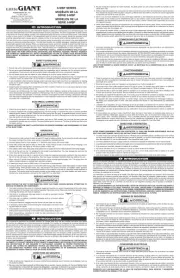
31 Maart 2025
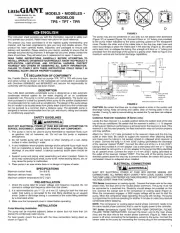
31 Maart 2025

31 Maart 2025

4 September 2024

4 September 2024

4 September 2024

4 September 2024

4 September 2024

4 September 2024

4 September 2024
Handleiding Pomp
- WHALE
- Vonroc
- Fluval
- Ozito
- Biltema
- Bulex
- Neptun
- Maruyama
- Grundfos
- Technaxx
- Nefit
- Karcher
- MSW
- Enermax
- Hoffman
Nieuwste handleidingen voor Pomp
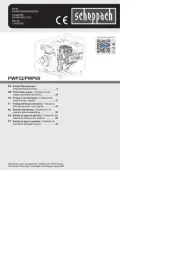
29 Juli 2025
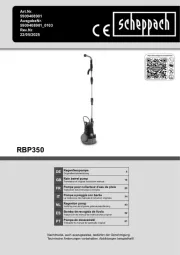
21 Juli 2025
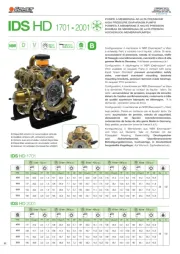
15 Juli 2025
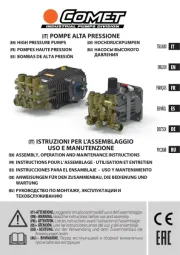
14 Juli 2025
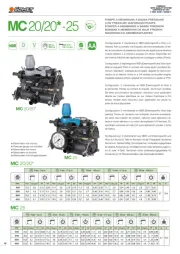
14 Juli 2025
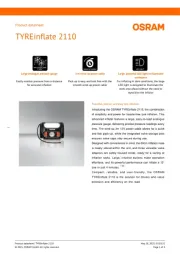
7 Juli 2025
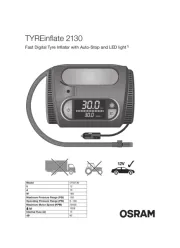
7 Juli 2025
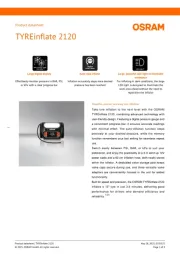
7 Juli 2025
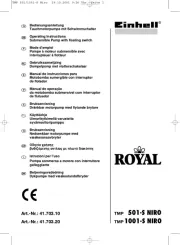
5 Juli 2025
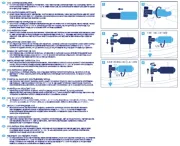
3 Juli 2025